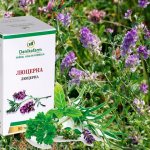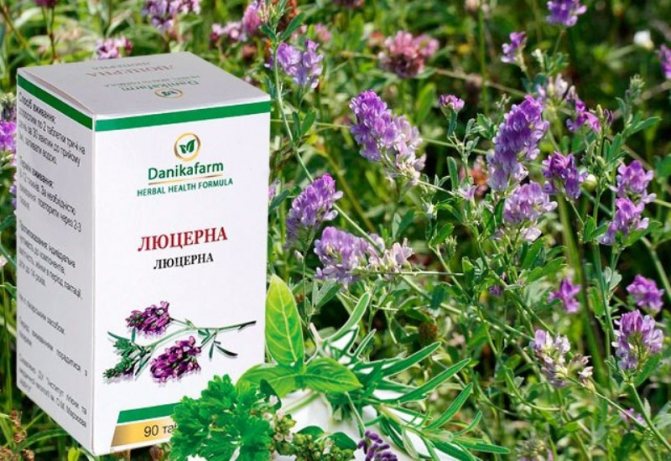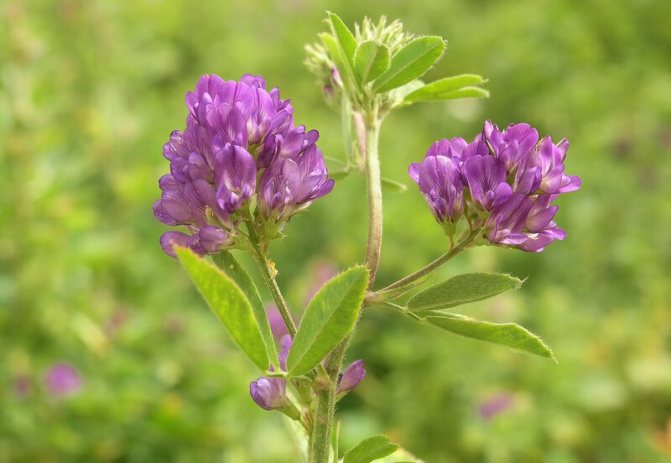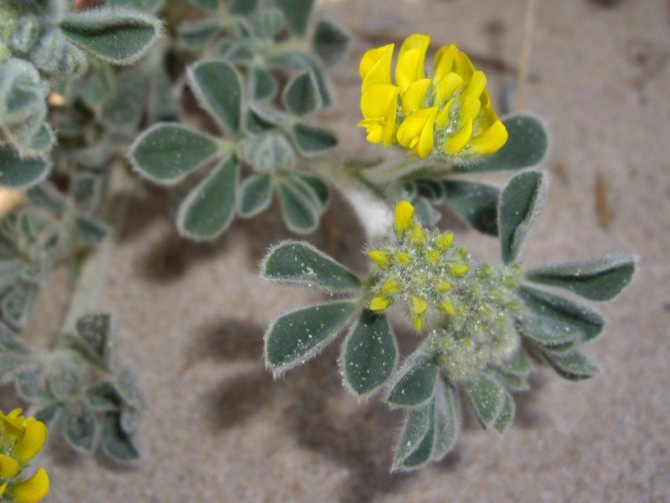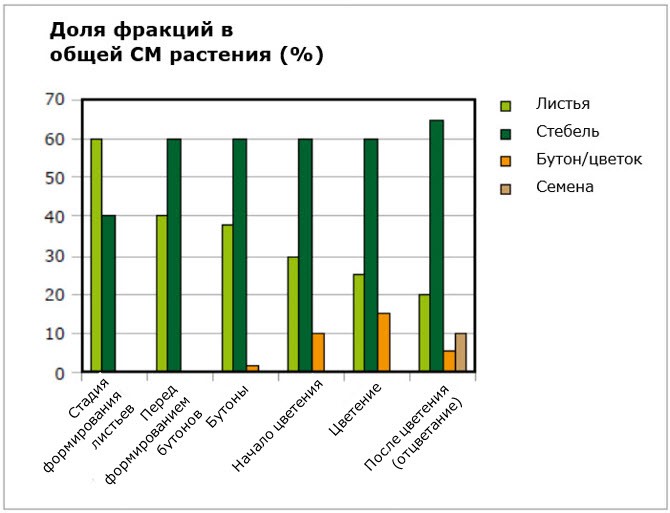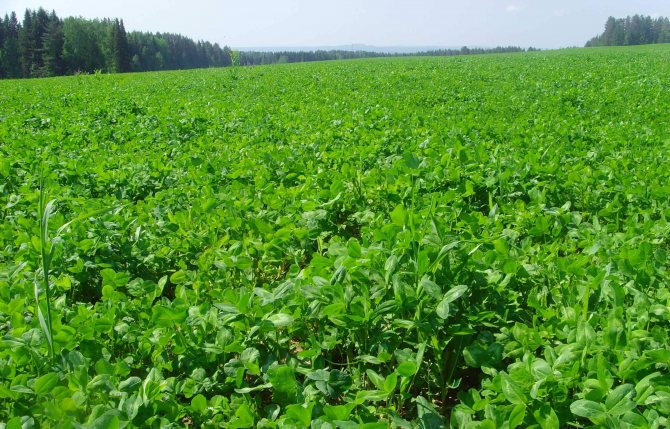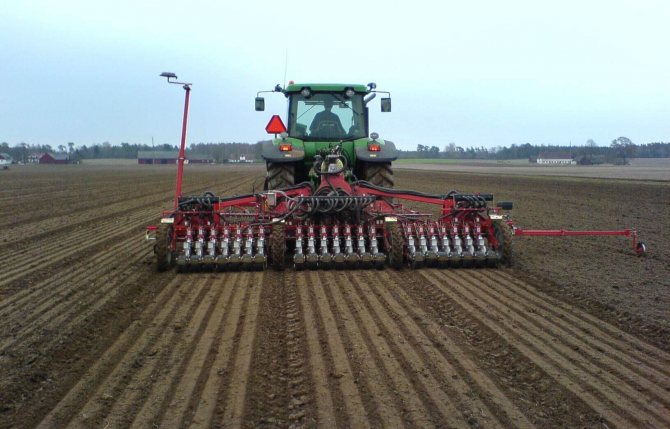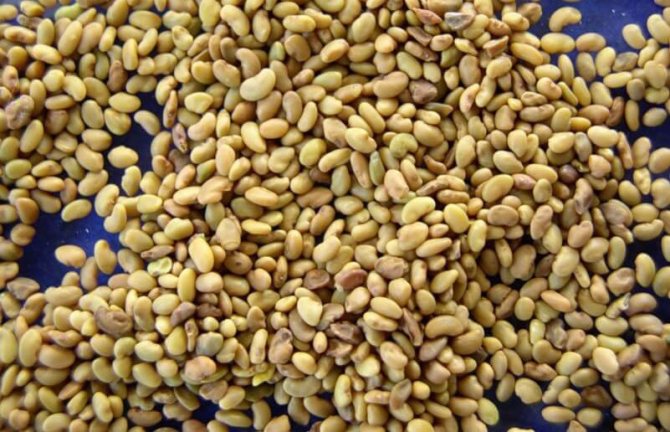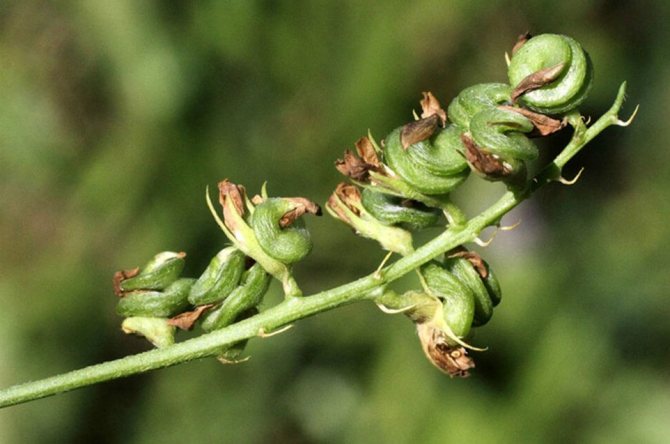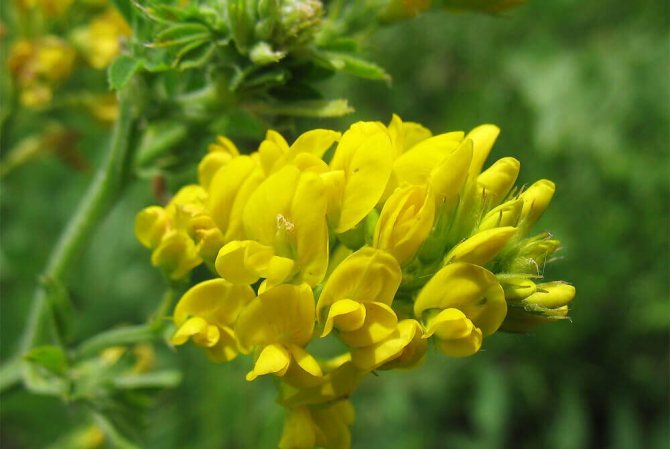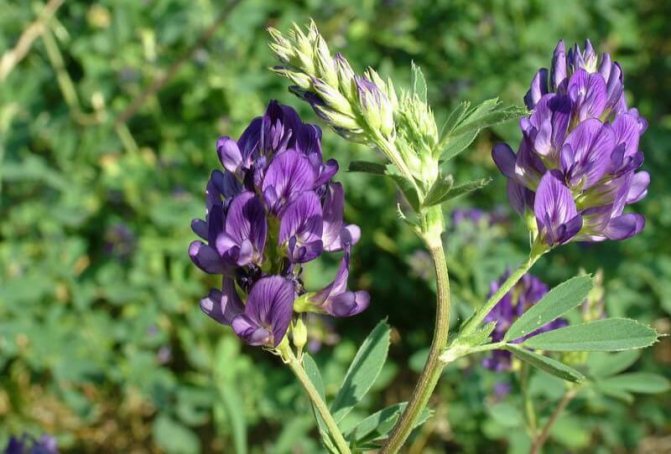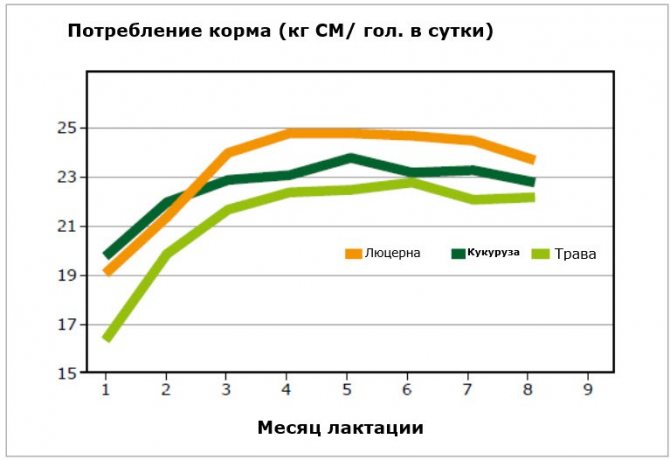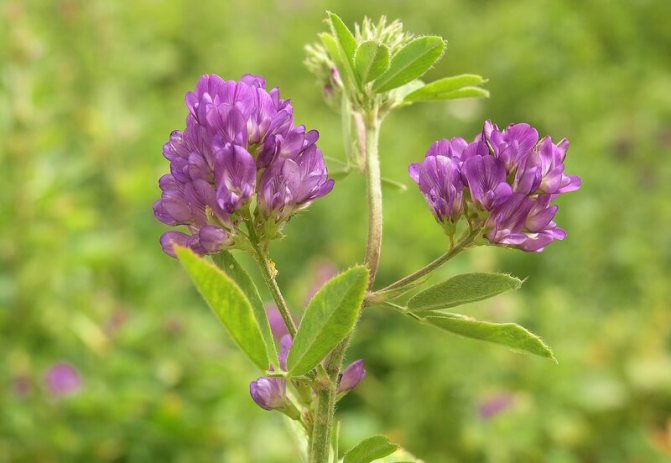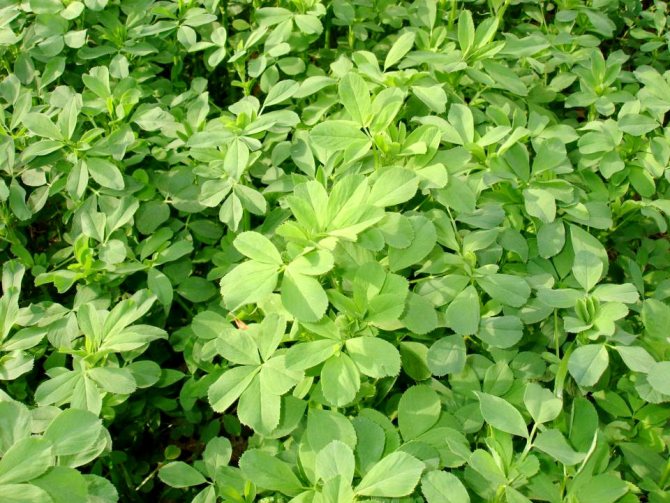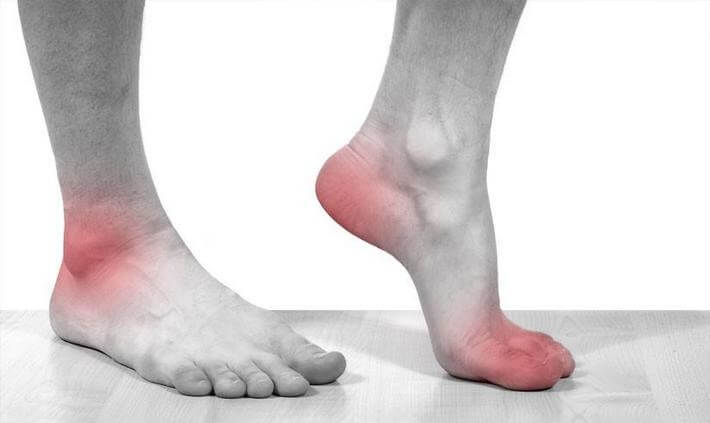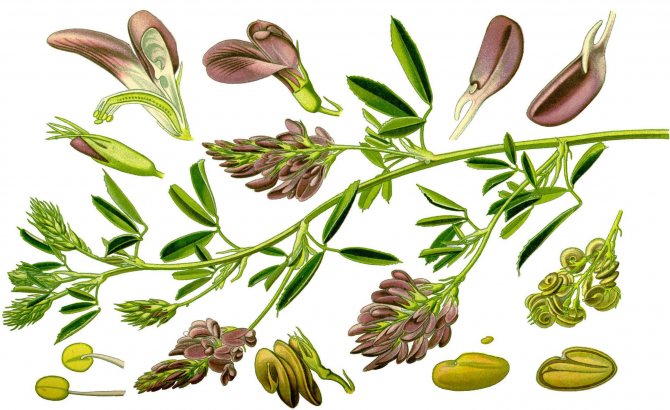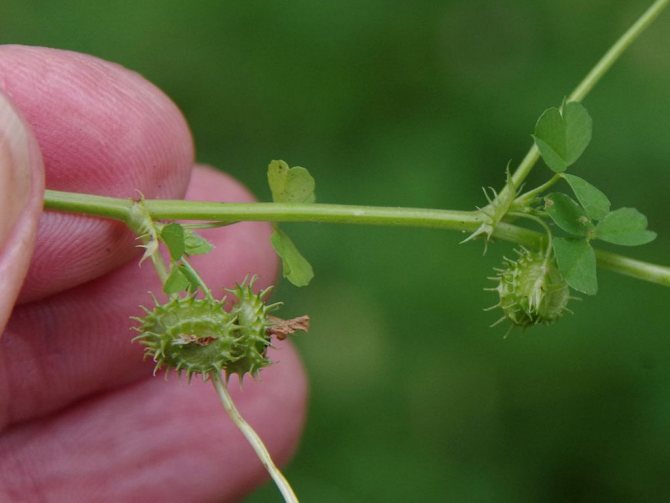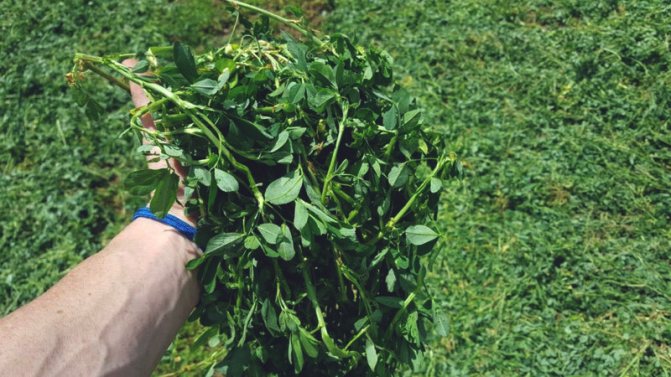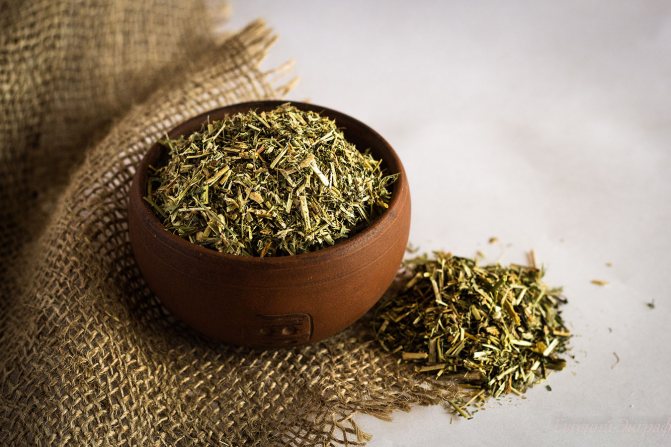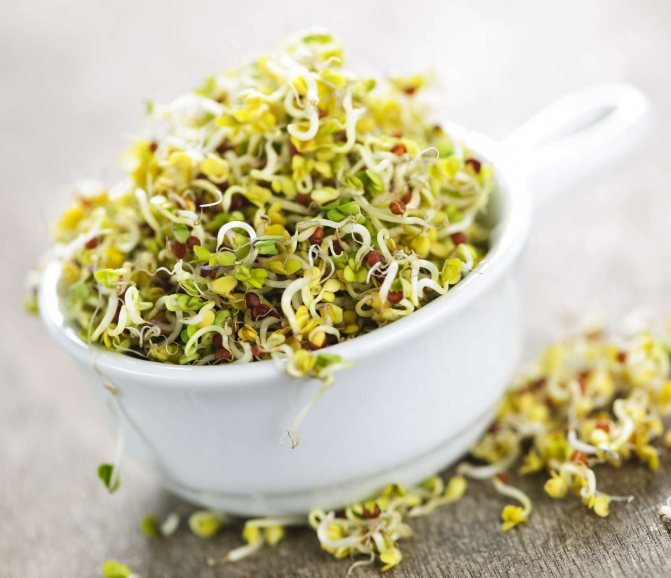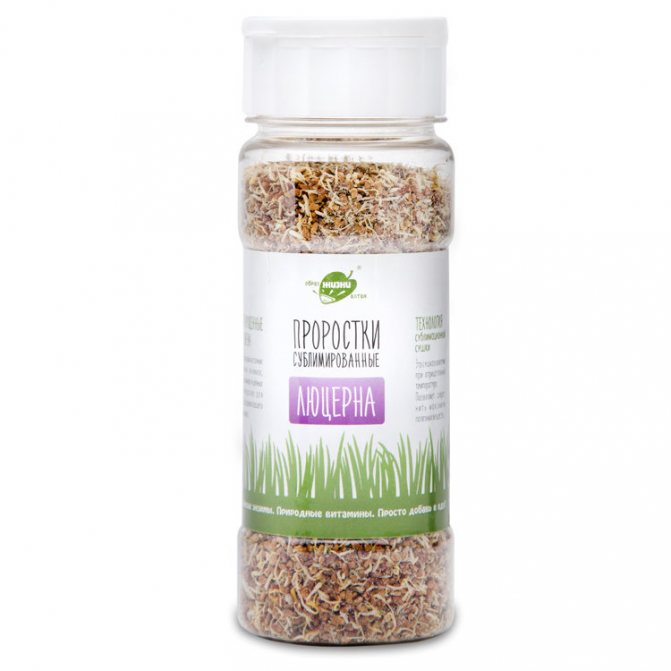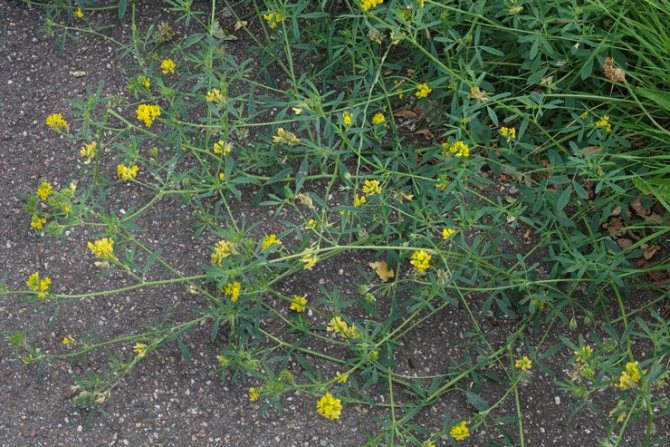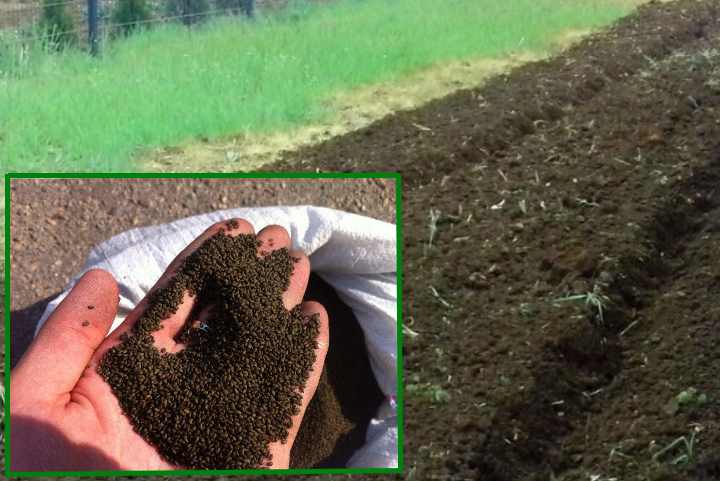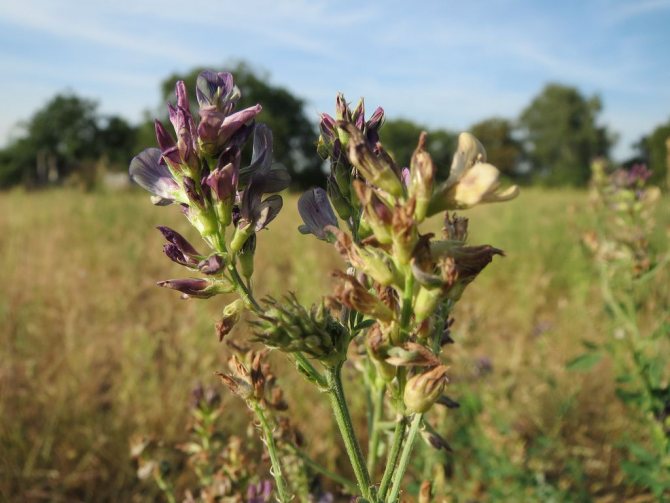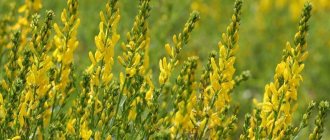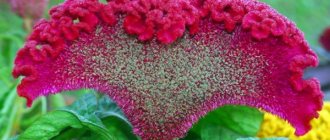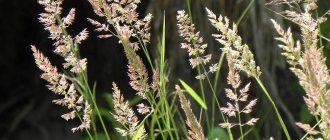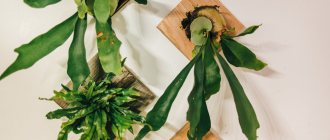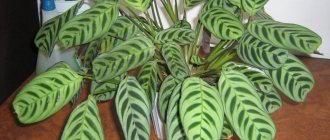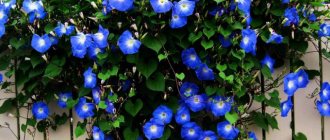There are many impressive health benefits associated with alfalfa, including its ability to lower cholesterol, improve digestion, and protect heart health. Alfalfa also helps with acute respiratory infections (ARVI), detoxifies the body, boosts immunity, speeds up healing and reduces inflammation. In addition, it has anti-cancer properties.
Alfalfa is often used in protocols for cleansing the body from parasites, candida, especially in the healing stages.
In this article, we will consider the scientific facts about what alfalfa is, its beneficial properties and contraindications for consumption. We will also give examples of quality alfalfa supplements that you can buy at the pharmacy and drink for your overall health.
Alfalfa sowing: a description of the culture and its application
Sowing alfalfa is a very valuable and widespread high-protein perennial crop throughout the world. It is cultivated in the southern central zone of Russia, in Africa and in Eurasia as a fodder plant. In the wild, it can grow in the Balkans and Asia - mainly on forest edges, dry meadows, grassy slopes, pastures, in steppes and river valleys.
Crescent alfalfa (Falcata) is the specific name of the plant, which is given by the shape of its fruit. The popular name is lechukha, dawn, medunka and vazil. The scientific name (Medicago) was given to this genus from the place where the plant was first discovered (the ancient country of Media), from where it came to Greece.
Alfalfa sowing: description
A herbaceous perennial plant that can grow up to 100 cm in height. Sowing alfalfa has a thick taphole and well-developed lateral roots. The powerful root system of alfalfa significantly improves the structure of the soil, increases its water permeability, air permeability, and also contributes to the accumulation of humus. Perennial species of this plant form small numerous tubers in the ground, from which young bushes subsequently develop.
Alfalfa has stems with four edges, branched and hollow. Its leaves are trifoliate, compound, with oblong or elliptical leaves. The inflorescence is presented in the form of an elongated brush, loose, with purple or blue flowers in the form of moths. In hybrids of this species, flowers can be of all kinds of colors, from purple to yellow. The flowering period of alfalfa begins in June - July. The fruits are spirally rolled beans. The seeds are quite hard, in the form of buds, are brown in color.
Alfalfa: application
Alfalfa is called the ancestor of food on earth. Herbalists consider it an excellent source of minerals and vitamins. For medical purposes, only the aerial part of this plant is used. Alfalfa is harvested during its flowering. The grass is dried under awnings in the open air, spreading out in an even layer up to three centimeters thick.
Alfalfa is rich in carbohydrates, ketones, organic acids, higher fatty acids, glycides, triterpinoids, steroids, essential oils, calcium, magnesium, iron, fluoride, potassium, silicon, chlorine, sodium, manganese, phosphorus, alkaloids, estrami asparagin, , fructose, melonic and myristic acid.It contains saponins, stigmasterol, tocopherols, phenol carboxylic acids, triasontanol, amino acids, anthocyanins, carbohydrates, vitamins K, C, B1, B12, B2, E, carotene, pantothenic acid and even vitamins D2 and DZ, which are rarely found in plants.
Medicines containing alfalfa herb have a wide range of effects. They contribute to the normalization of metabolism, have a positive effect on the thyroid gland, improve the state of the circulatory system, increase hemoglobin and lower cholesterol levels, and also prevent rickets and strengthen bones.
In addition, the consumption of alfalfa boosts immunity, regulates the function of the pituitary gland (appendage of the brain) and has an antitumor effect.
Alfalfa strengthens the body against various diseases, especially after operations and during the recovery period. It is an excellent diuretic. Due to the active compounds in its composition, alfalfa has a powerful anti-inflammatory effect against tuberculosis, arthritis and fungal diseases.
Alfalfa herb is rich in vitamin K, which prevents bleeding and bleeding. It is widely used in hemorrhagic syndrome. And the high content of fluoride in alfalfa prevents tooth decay.
Also, alfalfa is recommended for ischemic heart disease, obesity, colds, joint diseases, anemia, bronchial asthma, diabetes mellitus, dysfunction of the pancreas and thyroid glands.
Related article: Dimorphant - useful properties, description
Wheatgrass plant
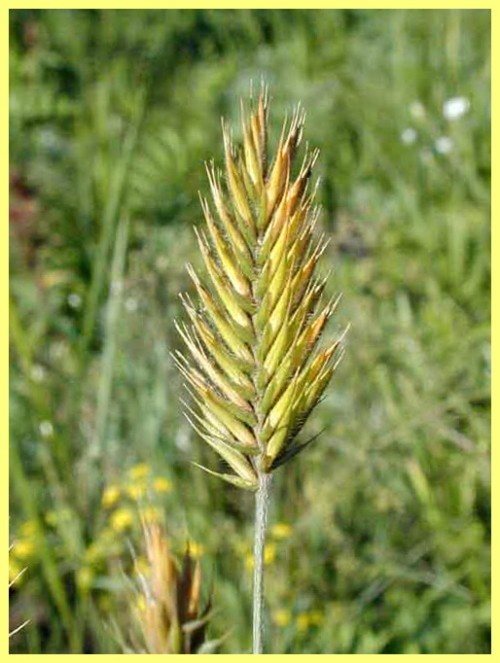
Zhitnyak is suitable for breeding in the arid areas of the South-East; it does not enter the north of Syzran. Its crops are found in Zap. Siberia. It grows well in the chestnut and southern brown and light lands. Sandy soils and salt licks give good harvests of corn crops. Wheatgrass does not tolerate acidic soils. Snowless and the most frosty winters, the wheat grows on ice without any damage. It tolerates spring frosts well. Of all the perennial grasses, wheatgrass is almost the most resistant to drought. It is quite durable, but gives the best yields of hay in the 3-4th year. After that, its mows fall, but it is heavily thinned out only from the age of 7. The wheatgrass is sown in the spring, but in places with very dry springs it is better to sow it in the fall, so that it has time to rise and get stronger before the frost. Sowing is done with and without a cover plant. Both drill and spread sowing is used. The embedding of seeds should be shallow. If a crust appears in the spring, in the first year of the life of the wheat, it should be broken. If the seeds have just begun to germinate, then light harrowing can be used, but when there are already large sprouts, then you need to use a roller with blunt protrusions. In the second and subsequent years of life, harrowing is used in the spring. Wheat grass produces 1 cut per summer. Wheatgrass is sown in a crop rotation or in separate plots. At the Krasnokutskaya op. drill sowing stations yielded a lower yield than scatter sowing. On heavily weedy and floating soils, wheatgrass should be sown wide-row at 35 cm.
Alfalfa sowing useful properties and contraindications
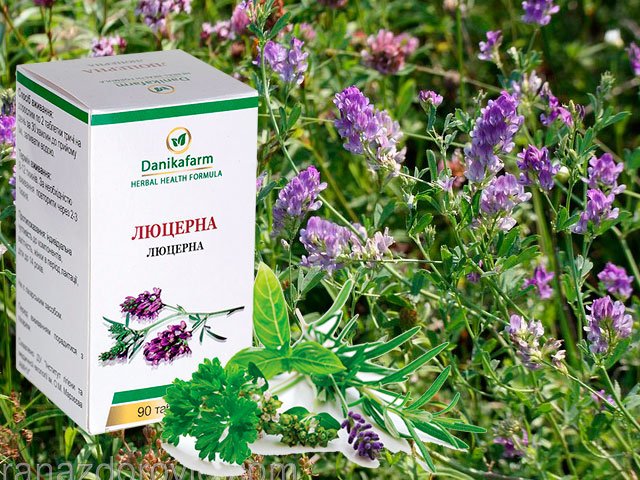

A perennial culture such as alfalfa (medunka) from the legume family has found wide application in medicine, cosmetology, cooking, and so on. And all this - due to the high content in it of such substances as amino acids (there are as many as eight in it), it is truly considered a healing plant.
It was first known as a laxative and diuretic. A lot of fluid in the body is good, but when there is too much, this fact can cause diseases such as rheumatism. Diabetes mellitus and others. Over time, it began to be applied in various other areas, which we will discuss in the article.
Meadow fescue photo
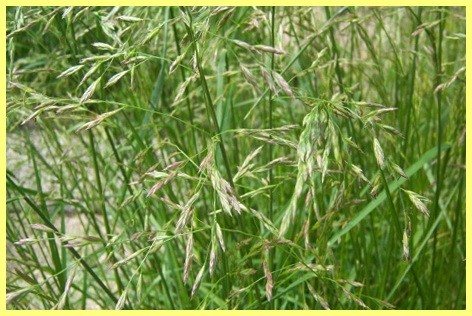

Meadow fescue is cultivated mainly in non-chernozem provinces in meadows. In the southern regions it is less common. For the non-chernozem zone of Russia, it is a very resistant plant and very suitable for sowing and in cultivated swamps. With good moisture, humus-rich loams, clays and processed marsh soils are the best soils for it. On podzols, lean sands, and on acidic soils, fescue yields poor yields and soon falls out. For sowing, it is taken on variable and permanent meadows. In the field grass planting of fescue with a period of use of sowing grasses of 3-4 years, fescue is also introduced into the mixture. The term of use is 5-7 years. Fescue reaches full development 2-4 years after sowing. It grows back very vigorously after mowing. Horse, bush cereal.
Alfalfa sowing: useful properties and contraindications
What is alfalfa? It is a medicinal plant, with a straight stem, green leaves, which is considered to be its homeland in Central Asia. It translates from Latin as "Median herb" - Medicago. Let's see what benefits it brings to our body:
- She promotes removing excess fluid from the body, awakens appetite and normalizes digestion (fight against ulcers, flatulence and heartburn).
- With its help, you can treat a disease such as endometriosis, because its components fight well with inflammation.
- Bad breath can be cured thanks to this herb due to its high chlorophyll content.
- Its beneficial properties help in the fight against hemorrhoids.
- Infusion of honeycomb is rubbed into the scalp for more intensive hair growthbecause it is improves the functioning of hair follicles.
- Weakness- use in the form of tinctures and decoctions.
- Colds.
- Nursing mothers and pregnant women can use young shoots. They containsubstances useful for building bone tissue.
- Blood clotting will get better thanks to vitamin K, which is very beneficial for liver.
- Treatment cystitisand kidney disease.
The beneficial properties of medicinal alfalfa do not end there., but here are the most important ones. But, do not forget about contraindications, because this remedy has them.
This folk remedy should not be used for individual intolerance. Also, with a disease such as lupus erythematosus. In general, you should consult your doctor before using any such drug.
What does alfalfa look like: grass and seeds?
Grass and flowers look like this:
She has such the seeds:
Useful properties of alfalfa
In different countries of the world it is used in different ways, for different purposes, but still get a wonderful effect. (Pay special attention to contraindications before using the drug.)
Europe: valuable roots and leaves with their beneficial properties are used as a treatment for diseases associated with the endocrine system. China: all diseases associated with digestive disorders of any complexity. America: An ancient recipe for combating jaundice. India: sore joints.
Herb composition and application
In addition to amino acids in its composition, it contains vitamins, minerals, phosphorus and calcium. Useful properties on the face! Therefore, it is used not only in medicine, but also in cosmetology.
Where else is medunka used?
• In cooking: young shoots go to salads and soups, squeeze out the juice. From seeds - flour. • Infusions, decoctions not only for ingestion, but also for taking a bath. • Ready-made preparations dry or in the form of a tincture can be purchased at the pharmacy (for example, Lucerin anti-wrinkle cream).
Ukos
When is alfalfa green manure mowed? During the flowering period, that is, 50-55 days after sowing. The mowed grass is left to re-mash or put in a compost pit. If there is too much grass, some of it is fed to livestock. After a month, it will be possible to mow the aftermath, avoiding lignification of the stems.Too coarse stems do not decompose well, therefore they are not very suitable for green manure.
When sowing in spring, the plant is mowed during flowering, when at least 10% of the seedlings have formed buds and have blossomed. Cutting is not recommended in rainy weather, only on a sunny day. Do not mow the plant too low, otherwise the young shoots will die. With incomplete disclosure of flowers, the grass is mowed at a height of 5 cm, during the period of active flowering - at a height of 10 cm.
Alfalfa is mown for green manure during active flowering.
If a plant is cut too often in the early stages of development, it depletes its nutritional resources. Therefore, farmers recommend mowing alfalfa when at least 10% of the seedlings were in their prime. If the plants look weak, the cut is postponed until the entire crop is in full bloom.
For livestock feed, the grass is mowed twice: during budding and flowering. With each mowing, the plant loses nutrients, so there is no point in mowing alfalfa more than three times. At what stage of development does the plant contain the most nutrients? They accumulate in tissues during budding. Before and after this period, there are much fewer microelements in the plant, therefore, it is best to mow alfalfa for forage when the buds are being formed.
Also, the grass is mowed at the end of August, as it has time to grow and form. Later in August, alfalfa is not mowed for forage, since the grass will not have time to recover before wintering. The cut is made at least 8 cm so that the plant resumes growth and development faster.
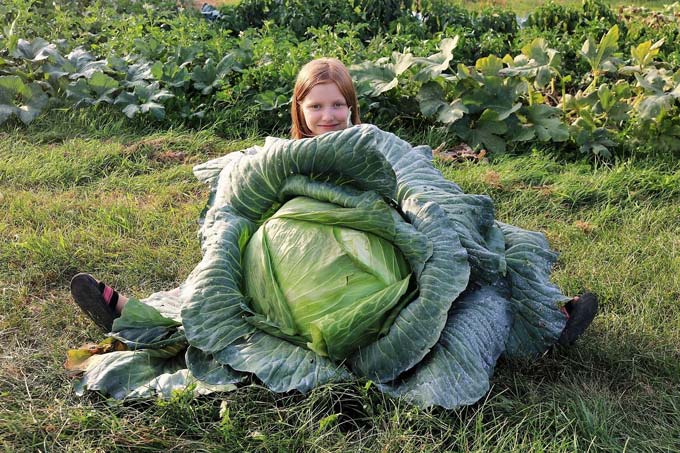

Alfalfa classification
There are about 20 species of this plant. Let's take a closer look at them by studying the area of application and comparing the appearance of plants.
Alfalfa sickle / yellow
It grows on loose soil, can withstand cold and even frost. Applicable in agriculture and medicine... In the latter, as a drug for migraines, pneumonia, kidney disease. Can be taken with a fast heartbeat.
Hop-like alfalfa
An annual plant used as food for herbivores.
Their names are clear that such a plant is used for sowing.
Volatile
Winter-hardy plant, improves soil fertility and its structure.
Tree medunka
Forage plant, technical... The only type of alfalfa that is grown as decorative... in Greece, the leaves are eaten.
Begonia alfalfa
Sainfoin photo
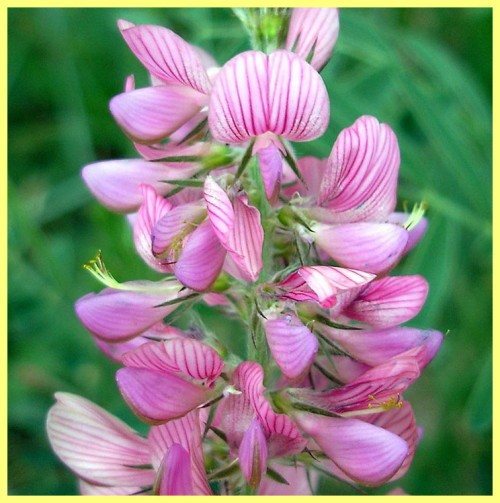

Sainfoin is more common in the southwestern and Little Russian regions: Kharkov, Poltava, Kiev, Podolsk and Volyn, it is also found in the Caucasus. Sainfoin grows well on fat soils, rich in lime and with a permeable, also lime-rich subsoil. With regard to soil, the requirements of eeparcet are very similar to those of alfalfa, but different from it in that it tolerates even shallow and lean soils better than alfalfa, if the subsoil is calcareous. Drought tolerates as well as alfalfa. Winter frosts withstands worse than alfalfa, requiring good snow cover. Suffers from late spring frosts. The sainfoin gives the greatest cuttings in the second, third years; the term of use is 4-5 years, in the southeast it is shorter and only under especially favorable growth conditions for 10 or even more years. It is used in mixtures for crop rotation for the purpose of long-term use of herbs.
how to sow alfalfa manually: video
- Alfalfa as a siderat
She saturates the soil nitrogen, nutritious substances - good fertilizer for humus plants. Possesses phytosanitary properties - will get rid of litter and nematodes, and for earthworms and beneficial bacteria for the soil - a godsend! It is very beneficial for many vegetables and fruit trees. Planting time for green manure is early spring. The soil needs to be loosened (25 centimeters). Planting depth in bulk - 1 - 3 cm.Alfalfa consumption (norm) - 1.0 - 1.5 grams per square meter, about 100 - 150 g per hundred square meters.
About 4 kilograms of honeydew takes 15 acres, it can be sown together with sand, mixed in half.
Related article: Musk mallow - useful properties, description
For these purposes, blue or sown alfalfa is used.... It is frost-resistant, blooms from June 15 for about 40 days. You need to sow seeds very early, well before that, having treated the soil. About 300 kg of honey can be harvested from one hectare (hectare). This is with good watering. And without watering - 30 kilograms. The honey from this plant crystallizes quickly and has an amber hue..
Growing
Alfalfa is grown from seed. They sow it directly into the open ground in early spring, in the first days of sowing. First, you should dig up the site, remove weeds and add lime. Dry soil is additionally moistened. Before sowing, the planting material is scarified and treated with biological products. The latter will create protection against bacterial and fungal infections. Seeds are sown in rows at a depth of 5-15 mm. It is recommended to pre-mix them with sand or sawdust so that the spread is more even.
Dorotheanthus: photo, cultivation, planting and care
Some gardeners practice sowing a mixture of alfalfa with other cereals, but in this case the plant may suffer from a lack of lighting. Growth will slow down and the number of seeds will decrease. The maximum growth efficiency is achieved when sowing in sparse rows with a distance of up to 45 cm. In this case, the work of pollinators will be as efficient as possible.
For sowing large fields, special beet seeders are used. On a small backyard, you can scatter seeds by hand, but why trample the surface with plywood. It is important to monitor the moisture content of the soil and prevent it from drying out.
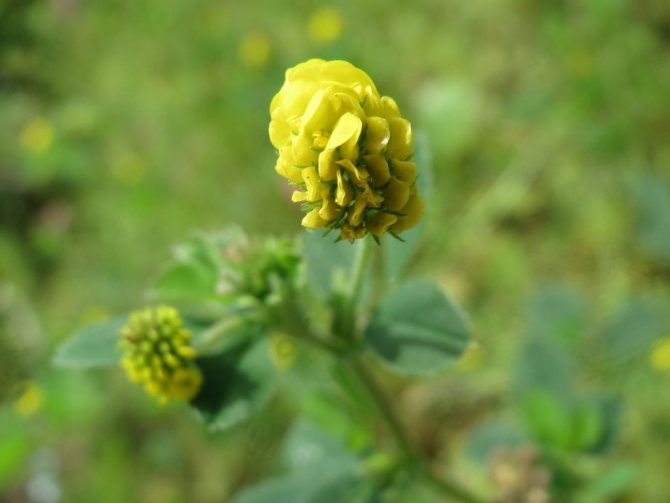

Real reviews of buyers and doctors about alfalfa
Vladimir, 45 years old, plumber:
“I had severe heartburn from almost all the food I ate. The doctors shrugged their shoulders - they could not understand. What is wrong with me. And here is one mother's friend, who is constantly treated exclusively with herbs and infusions, recommended me a decoction of honey. Of course, I was skeptical about this new recipe, but what was to be done? As a result, after a month of use, the heartburn disappeared like a hand. "
Christina, 25 years old, housewife:
“I drank a decoction of honey jelly during pregnancy and feeding my daughter. The doctor advised. The baby was born healthy, the doctor noted more calcium in the body, not more than the allowable of course. And my state of health changed, I used to be tormented by constant fatigue. And now everything is normal. I recommend this medicinal herb to moms! "
Valeria, 47 years old, copywriter:
“I have been fighting wrinkles since I was 40. I tried both commercial creams and folk remedies. When I found out about Lucerin cream with real Altai alfalfa, I immediately became interested. It moisturizes my skin, adds shine, smoothes wrinkles, deeply nourishes skin cells. I am delighted, buy - you will not regret it! "
Vitaly, 56 years old, therapist:
“It is very useful to drink a broth of alfalfa on an empty stomach. In addition to being an excellent diuretic, its beneficial properties help many people recover from illness. It suits people of all ages. "
Timofeyevka meadow photo
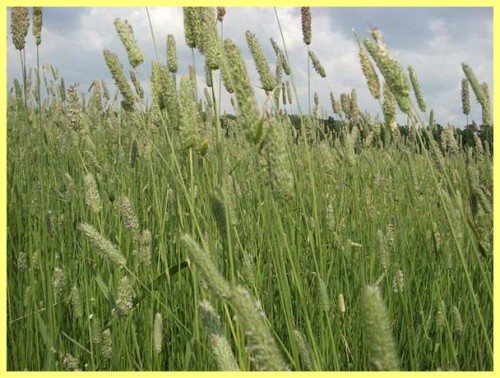

Timothy grass is widespread throughout Russia, with the exception of the most southern and southeastern regions. The southern border of its profitable cultivation in the fields, that is, the border to the south of which it is unreliable, passes approximately through Akhtyrka and Sumy, Kharkov region, goes to Voronezh, Kozlov, Penza, Bugulma, Ufa. To the south of this border, its seedlings can be somewhat secured by sowing, not by spring, but by winter in autumn, which makes it possible for it to strengthen in autumn and, thanks to winter moisture, develop satisfactorily in spring. In this case, clover should be sown to it in the spring.In the Saratov, Samara, Simbirsk regions. it is completely unreliable; the hay is rough, the aftermath grows poorly and produces very little foliage. It quickly degenerates from grazing. The best yields are obtained on fresh, sweaty with a sufficient amount of humus, loamy, clayey and boggy soils. Sandy dry soils, as well as dry loams and clays and podzols are unfavorable for timothy. The low standing of groundwater associated with dryness of the soil does not respond well to the growth of timothy. Meadow timothy is sown in short-term crops in fields and in mixtures for variable and permanent meadows. In field crop rotations, it is sown in a mixture with red clover. The term of economic use of timothy is 3-4 years. It reaches its greatest development in the second year. Regrowth after cutting is good. Horse, bush cereal. In the north of the non-chernozem belt (Vologda Oblast), timothy crops are very common on undercutting. The forest cut at the beginning of summer remains in place for a year to dry and is burned the next year. After removing unburned residues from the site, the undercut is harrowed and timothy is sown under the cover plant - winter rye.
Sowing alfalfa (Medicago sativa)
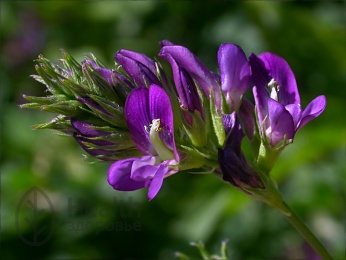

Sowing alfalfa is a perennial herb belonging to the legume family and is used as a forage crop. In addition to being used in agriculture, it is also used in herbal medicine, folk medicine and in the manufacture of dietary supplements. Alfalfa is listed in the pharmacopoeias of some Western European countries as a cholesterol-lowering agent.
Table of contents
Flower formula
In medicine
Alfalfa is cultivated as a valuable forage plant and as a phytosanitary for soil health. The plant is not included in the State Pharmacopoeia of the Russian Federation and is not used by official medicine. However, herbalists consider the plant to be a source of a large amount of vitamins and useful minerals; in folk medicine, alfalfa herb is used as a sedative.
Also, alfalfa is used in the manufacture of dietary supplements containing flavonoids and isoflavones (Cardiin, Arthriosin international formula, Alfalfa-Santegra.).
Contraindications and side effects
Alfalfa and its preparations are contraindicated in pregnant women, lactating women, children, as well as in autoimmune diseases, diagnosed with systemic lupus erythematosus.
In cooking
Recently, alfalfa has been used to make mashed potatoes and soups. There is also such a dish as sauerkraut, but it contains a lot of salts, so it is better not to use it in case of joint diseases.
In other areas
Sowing alfalfa is an excellent honey plant, you can collect up to 300 kg of transparent honey per hectare of irrigated land.
Alfalfa grass serves as food for worms and soil microorganisms. Where alfalfa grows, soil formation conditions are improved. On such soil, the incidence of plants decreases, and the yield of subsequent crops increases.
Classification
Sowing alfalfa (lat. Medicago sativa) is a herbaceous plant, a type species of the genus Alfalfa (lat. Medicago) of the legume family (lat. Fabaceae).
Botanical description
Stems are tetrahedral, glabrous or pubescent, branching strongly in the upper part, reaching a height of 80 cm, can be straight, broadly bushy or lying. The rhizome is powerful, thick, lies deep, can reach a depth of 10 meters. Leaves are arranged on petioles, 1-2 cm long and 0.3-1 cm wide, oblong-obovate, whole. Peduncles are axillary, longer than leaves. Raceme is capitate, dense, multi-flowered, 2-3 cm long. The flowers are blue-violet. Calyx 0.5-0.6 cm long, tubular-funnel-shaped, hairy. Alfalfa flower formula - H (5) L1.2. (2) T (5 + 4) .1P1. The fruit is a spirally twisted pod with bud-shaped achenes, about 0.6 cm across.
Related article: Nut lotus - useful properties, description
Spread
Alfalfa grows wild in Asia Minor and the Balkans. Cultivated forms and as an invasive plant are found practically all over the world. Most often, alfalfa can be found in dry meadows and river valleys, in the steppe and forest edges, on grassy pastures and hillsides.
The plant is also found in warm places in Europe with a temperate climate, in Central Asia, North Africa and Australia.
Procurement of raw materials
Chemical composition
Alfalfa is rich in active substances: iron, phosphorus and calcium. The plant also contains vitamins A and C, unsaturated fatty acids, tannins, amino acids, phytoestrogens (coumestrol and genistein), cyclic compounds and saponosides.
Alfalfa seeds contain vitamins B1, B2, B12, C, D, E, K, chlorophyll and amino acids. The concentration of vitamins and the accumulation of nutrients in the seeds increase during the ripening of the pod. Alfalfa leaves also contain niacin, biotin, folic acid, and pantothenic acid.
Pharmacological properties
Alfalfa is rich in useful microelements and contains a large amount of vitamin C, and also has general strengthening properties. The active substances contained in the plant (phytoestrogen stachydrin and 1-homostachydrin) regulate menstruation and increase milk secretion in women. Alfalfa has a diuretic effect. The extract made from alfalfa protects against sunburn and radiation.
Alfalfa sowing is used in case of exhaustion, body fatigue, to maintain strength during the recovery period. The use of alfalfa increases the elasticity of the arteries, prevents the development of atherosclerosis, stabilizes blood sugar levels, effectively lowers blood pressure, has an antitumor effect, improves immunity and regulates the function of the pituitary gland.
Application in traditional medicine
Alfalfa is popularly used for obesity, atherosclerosis, heart pain, coronary heart disease, joint diseases, to relieve pain in arthritis, arthrosis, gout, rheumatism. Also, alfalfa helps with colds, bronchial asthma.
With liver intoxication, general depletion of the body after an illness, alfalfa helps to cleanse the body of toxins and regain strength. It can be used for detoxification in the treatment of alcoholism. Alfalfa can help with cramps by removing excess cholesterol from the body.
Alfalfa is effective for constipation, acne, allergies, gastrointestinal diseases, removes uric acid, normalizes water balance. Helps with diseases of the bladder, cystitis, nephritis. A decoction of alfalfa herb is used for douching with Trichomonas colpitis.
Alfalfa improves the condition of patients with diabetes mellitus and those suffering from dysfunction of the thyroid and pancreas.
Alfalfa contains a significant amount of vitamin K, which prevents hemorrhage and bleeding; it is used for various forms of hemorrhagic syndrome, one of the causes of which is radiation injury. Powder from alfalfa sowing leaves is used externally as a hemostatic and wound-healing agent, especially for cuts.
Just like mint, alfalfa helps to improve appetite by brewing it like tea. The high fluoride content allows the use of alfalfa to prevent caries.
Introduction
Today, alfalfa growers plant more than thirty million hectares of plots, and this figure is increasing every year around the world. The plant is very popular and in demand in more than eighty countries of the world, and in this article we will tell you more about its features and characteristics, as well as how to properly care for alfalfa so that the result does not disappoint anyone, and in order to get the most out of plantings. Useful and nutritious substances.
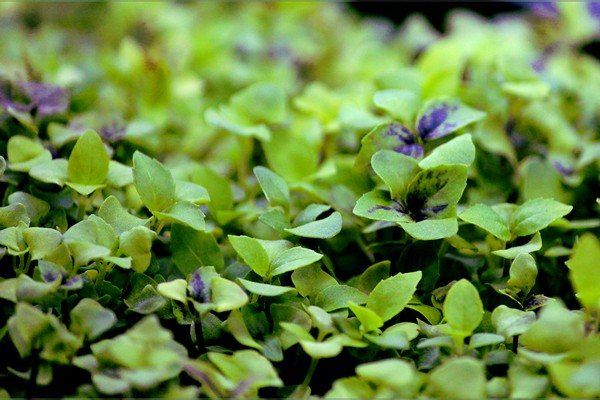

Pharmacy preparations
If you want to buy a miracle herb in a pharmacy, you can easily find it, because most drugs have a similar name to the herb, the name of Lucerne or Alfalfa.
So, in pharmacology, such forms of drug release are presented, such as:
- grass;
- packaged herbal tea;
- biologically active additives (BAA);
- tincture;
- pills;
- phyto candles;
- cosmetics.
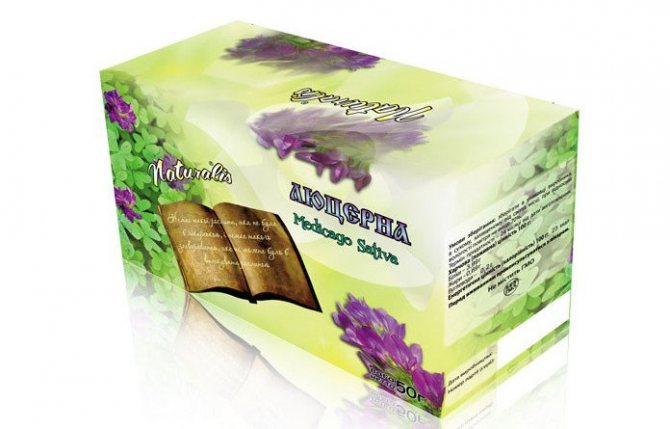

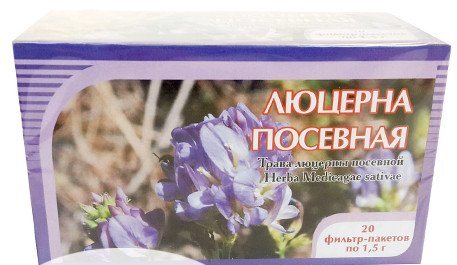



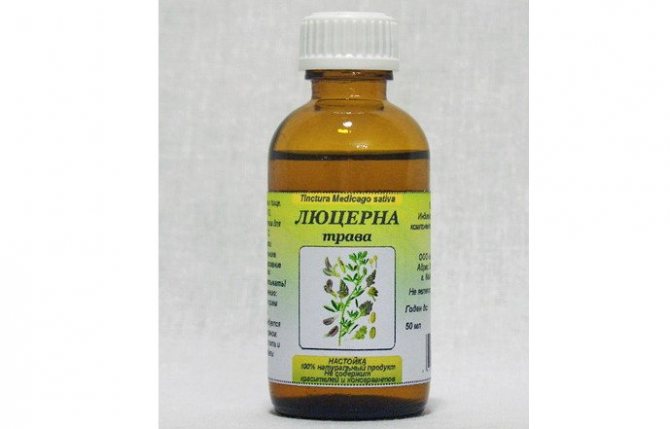

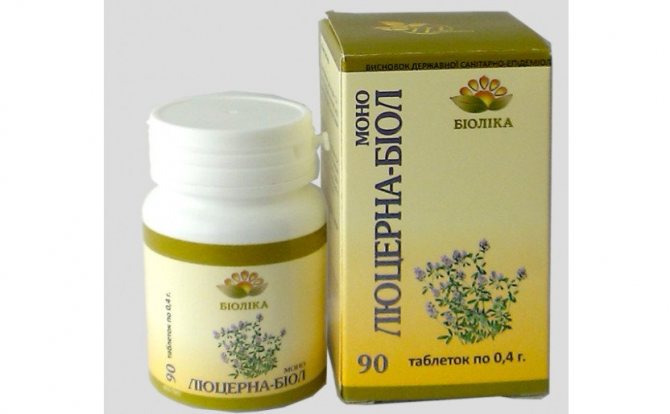

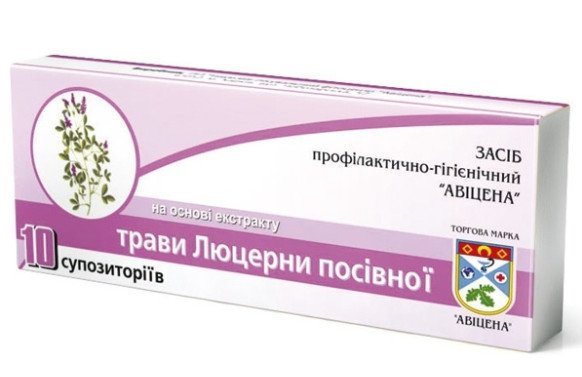

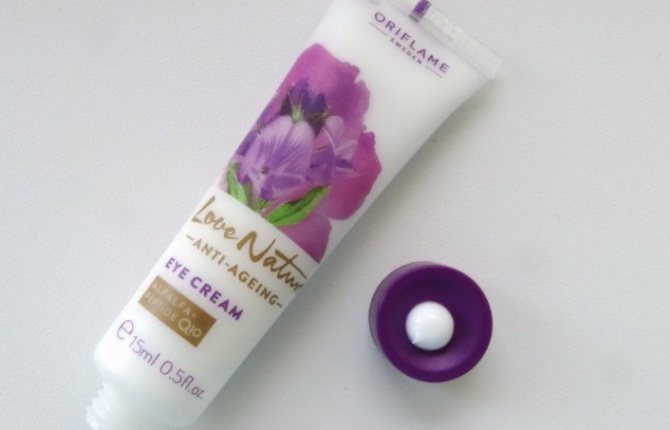

Important! Ayuverda uses alfalfa for the treatment of peptic ulcer disease, due to the content of vitamin U, which is able to heal the gastric mucosa.
Polovitsa white photo
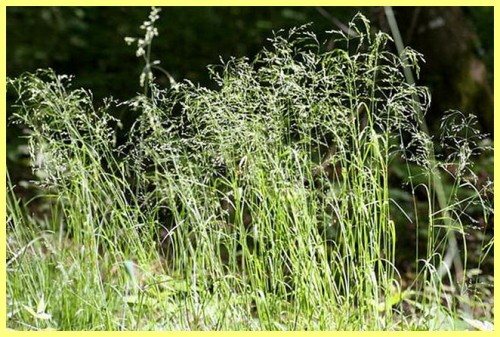

White bent field in culture is found in the non-chernozem zone of Russia. Prefers a climate with relatively heavy rainfall. It tolerates winter cold well. Dry soils are unfavorable for the development of the common bent; It goes well on damp sandy loam, loam and cultivated bogs. It is sown in mixtures mainly for pastures and long-term meadows. Reaches full development in 8-4 years. It grows back well after mowing and grazing. Grain rhizome, grassland.
Meadow bluegrass photo
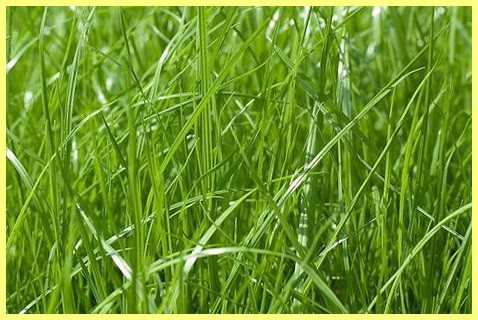

Meadow bluegrass it is rather indifferent to the climate - it is found throughout Russia. It tolerates droughts, frosts and wet areas well. Good soils for meadow bluegrass are loose, humus-rich loams and sandy loams, as well as marsh soils after drying and processing. Bluegrass grows poorly on dry sands, on strong podzols and on acidic, poorly drained peatlands. It is used as a long-term cereal in mixtures for permanent and variable meadows. Reaches full development in 4 - 5 years of use. Bluegrass growth in spring and early flowering (close to hedgehog). After mowing and grazing, regrowth is very vigorous. Therefore, meadow bluegrass appears to be an excellent plant for the establishment of artificial pastures. Grain is grass root, rhizome.
Hedgehog team photo
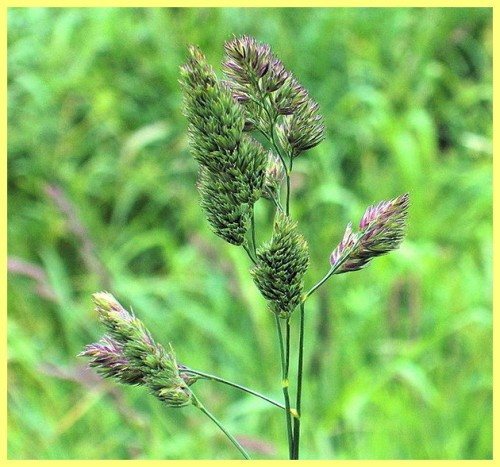

The hedgehog team found the greatest use in the non-black earth zone of Russia. The climate is more temperate. Deep, sufficiently moist, humus-rich loams, clays and sandy loams are the best soils for the hedgehog. It fails on acidic, damp soils and on dry sands; there were cases when a hedgehog quickly fell out when sowing it in a mixture with other grasses in swamps. The hedgehog is used for sowing in permanent and variable meadows. In the cases indicated in relation to fescue, it is also used for field grass sowing. The term of use of the hedgehog is 6-8 years. It reaches its greatest development by 3-4 years after sowing. The development of hedgehogs since spring is very rapid, and flowering is early. The hedgehog grows back well after mowing. Horse, bush cereal.
Phytoestrogen
Today, the hormonal effects of the herb on the human body are poorly studied, although the remedy is quite widely used to alleviate the unwanted symptoms of menopause. Phytoestrogens are non-steroidal plant compounds. They have a weaker effect than estrogens, and are characterized by a dual effect: with a lack of hormones, they make up for their deficiency, and at a high level they displace them. For example, they are able to inhibit the growth of hormone-dependent neoplasms, as opposed to real estrogens, which activate the growth of tumors.
Alfalfa contains phytoestrogen coumestrol and a tiny amount of formononetin. They affect the action of individual enzymes, just like real estrogens (female sex hormones). Thanks to this, they are effectively used to treat acne, oily seborrhea, androgenic alopecia.
According to experts, the addition of phytoestrogens to the diet in old age helps to prevent prostate cancer.
During menopause, the amount of estrogen in a woman's body decreases, as a result, metabolism is disrupted, calcium is washed out, cholesterol levels increase, and chronic diseases are exacerbated.In this case, the use of phytoestrogens in the composition of saturated preparations will help to cope with the situation.
Starwest Botanicals, Organic Alfalfa Leaf Powder, 454 g.
See iHerb Pricing
The additive is an organic powder of alfalfa leaves, produced by an American company according to the original Egyptian recipe. The company guarantees high quality and environmental friendliness of the product. The natural remedy is recommended for vegetarian diets.
High quality and safety of the drug is ensured by a heat-resistant film covering the inner side of the bag.
Slimming
The problem of reducing excess weight in our time worries many. Usually they prefer to use natural herbal remedies that are gentle and not harmful to health. Herbs for getting rid of extra pounds by action are divided into several groups:
- cleansing the body of toxins and toxins;
- diuretics;
- reducing appetite.
Alfalfa helps to detoxify the body, stimulates digestive processes and has diuretic properties. The saponin content contributes to the rapid breakdown of fat cells. Weight loss is favored by the improvement of metabolism, regulation of the functions of the endocrine glands.
Nature's Way, Alfa-Max, 10X Concentration, 100 Capsules
See iHerb Pricing
Nature's Way is a certified nutritional supplement made from highly processed and easily digestible alfalfa leaves and juice concentrate.
The package contains 100 capsules with a tenfold concentration of the active ingredient. The certified product is produced from plants grown in ideal conditions. It is recommended to take 2 capsules three times a day with meals.
Potential harm
The only one clearly a pronounced contraindication to taking alfalfa is systemic lupus.
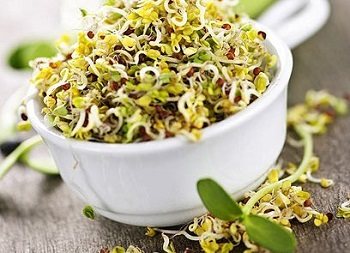

It is not recommended to take decoctions and infusions based on this herb in case of an allergic reaction on the components that make up the product.
It is undesirable to use alfalfa decoctions when taking medications that affect blood clotting, exacerbation of gastrointestinal diseases and autoimmune diseases.
Children under 12 years of age should only take alfalfa-based medications with the permission of your pediatrician..
Taking medicinal broths or alfalfa teas should be started with minimal doses. Before starting treatment, you should drink medicines with bifidobacteria, probiotics to avoid constipation, diarrhea, flatulence.
Due to the fact that alfalfa has pronounced medicinal properties, it is not recommended to take it for a long time. Treatment is carried out in courses of 2-3 months. Then you need to take a break for 1 month.
If you use alfalfa for medicinal purposes, following all the prescriptions of doctors, then no side effects will occur.
Common bluegrass photo
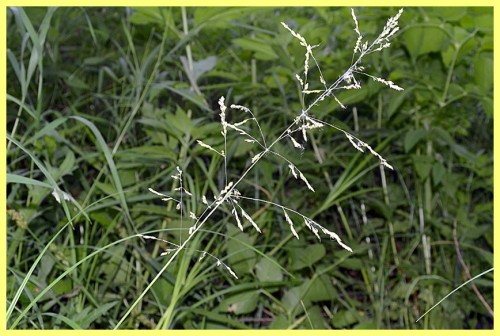

Common bluegrass is suitable for the non-chernozem zone of Russia, while preferring a temperate and humid climate. Common bluegrass will be born very well on loams and clays, which are sufficiently moist and rich in humus. It is very suitable for bog culture. The bluegrass does not like dry and strongly podzolized soils. It is used for establishing long-term and variable meadows. Reaches full development PA 3-4 years.
Structure
The composition of this plant is known to many today.
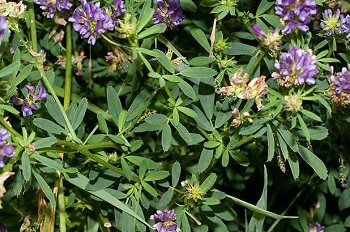

Its components - fatty acids, essential oils, pectins, chlorophyll, vegetable steroids, saponins, nicotinic and pantothenic acid, carotene, enzymes, triterpenoids, hormone-like components.
It also contains vitamins K, E, C, group B.
The plant also contains fluoride, selenium, calcium, silicon, iron, copper, manganese and zinc.
The glycemic index of the product is 10 units, and calorie content of young shoots - 23 kcal.
The seeds of the plant have a caloric content of 330 kcal.
100 g of the product accounts for: carbohydrates - 4 g, proteins - 0.2 g, fats - 0.7 g.
Historical reference
Alfalfa was recognized thanks to the American Karl Rehnborg. Between 1915 and 1927, he worked as a sales representative in China. By occupation, the young man had to travel a lot throughout the country. He actively studied local traditions and customs. The American's particular attention was drawn to the difference in the diet of rural and urban populations. Renborg noticed that the inhabitants of the rural areas of China that are actually “cut off from civilization” are more active and cheerful than the inhabitants of large cities. Moreover, they maintained mental clarity and health until old age.
After analyzing the information at his disposal, Rehnborg came to the conclusion that it was all about the diet of the Chinese. So, the inhabitants of the cities practically did not use the plant, which is very popular among the peasants - alfalfa. In the villages, she enjoyed incredible popularity and even won the honorary title of "the basis of all goods."
After studying the chemical composition of alfalfa, Rehnborg returned to the United States to create the world's first dietary supplement. It was a vegetable concentrate based on alfalfa, parsley, watercress, and yeast.
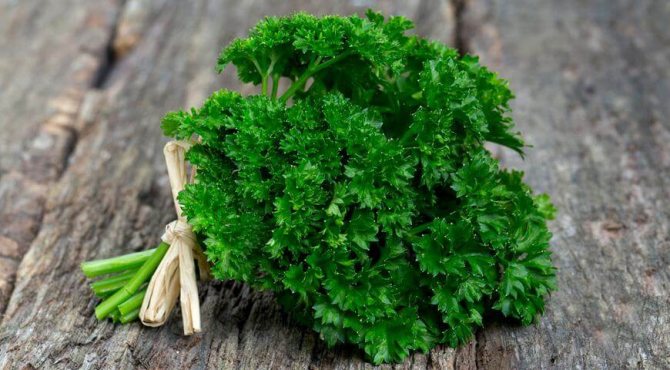

Then there was a curiosity. Renborg began to hand out his invention to his friends with a generous hand, inviting them to immediately try it out. However, they refused his offerings for fear of taking a strange drug. Then an insight descended on Rehnborg - he realized that in order for his invention to be in demand, it must be sold, not gifted. In 1934 he founded his own, which was renamed Nutrilite Products in 1939. Rehnborg also proposed a fundamentally new scheme for selling goods: now his friends could recommend the company's products to their friends, and Rehnborg paid those who brought new customers to the company. In 1947, the future founders of Amway, Rich De Vos and Jay Van Andel, joined Nutrilite Products. In 1972, Amway and Nutrilite merged to form the world's first organic brand. And all thanks to alfalfa!
Traditional medicine recipes
Traditional healers know many recipes, the main ingredient of which is alfalfa.
With diseases of the cardiovascular system
It is necessary to prepare an infusion of six tablespoons of dry raw materials and 500 liters of water. After six hours, filter and drink one-fourth cup at a time, before breakfast, lunch, and dinner. The duration of the course is one month.
For the treatment of diabetes
Pour two teaspoons of dry herb honeycomb with a glass of boiling water, and then keep it in a water bath for a quarter of an hour. After the broth has been infused warm for an hour, filter and drink during the day.
With neuroses
Pour 2 tablespoons of dry crescent honey herb into 300 ml of water. Boil for ten minutes, then pour into a thermos and let it brew for three hours. Then the broth must be filtered and drunk three times a day, 100 ml each.
For joint pain
Pour 5 tablespoons of dry raw materials with 500 ml of vodka. The tool should be infused for fourteen days. After that, it should be taken twice a day, thirty minutes before meals, ten drops of the tincture in 50 ml of water.
To increase lactation


To improve lactation, nursing mothers should add a quarter teaspoon of dry herb honeycomb to regular black tea. The duration of the course is five days.
For bruises and insect bites
Mix the crushed leucah seeds with water to make a paste. Spread it over the affected area. Soon the pain will subside and the swelling will subside.
Slimming
A decoction made from 200 g of young shoots filled with two glasses of boiling water will help to significantly reduce appetite. The infusion should be taken a quarter of an hour before meals.
Foxtail plant photos
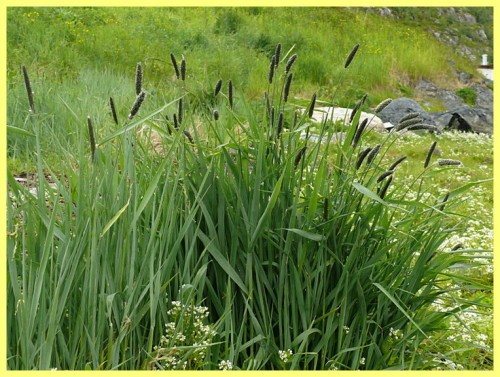

Foxtail is cultivated in small quantities in Kursk, Ryazan, Saratov, Kharkov, Podolsk, Kaluga, Moscow, Tver and some other regions. It works great on wet, fertile, loamy and sandy loam soils. In low-lying bogs, after drying and processing, it also gives good mowing. Podzolic, dry sandy and heavy clay soils are poor foxtail soils. The foxtail is not afraid of the proximity of groundwater. Foxtail is usually introduced into a mixture of perennial meadows. In especially favorable places for it, for example, in wet or irrigated meadows, it is sown in its pure form. Foxtail is a very long-term plant, it produces mows for 8-12 years. The highest mowing begins from the 3rd year of using it. Since spring, it starts flowering very early, in comparison with other grasses. This circumstance is an inconvenient moment when sowing foxtail in a mixture with other grasses, the non-simultaneous flowering of different grasses in this case does not allow collecting hay of the highest quality. After mowing, foxtail grows back quickly and gives a second cut under good growth conditions. Horse cereal, rhizome.

